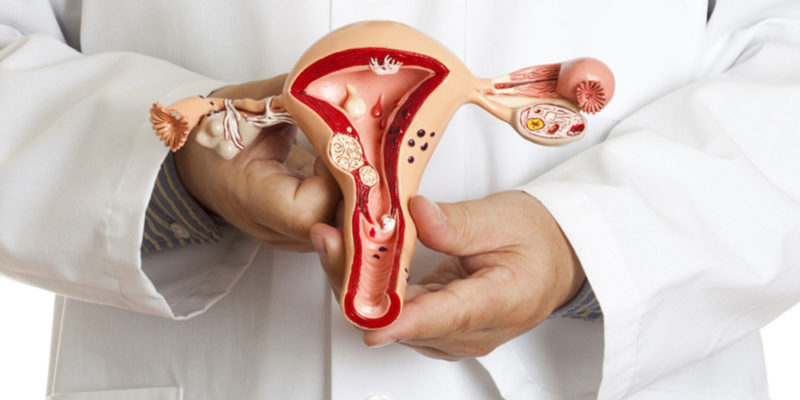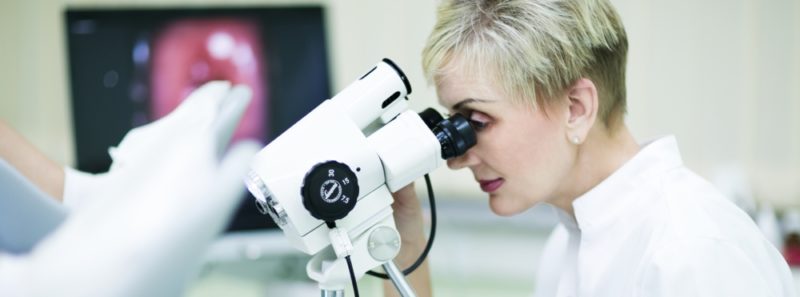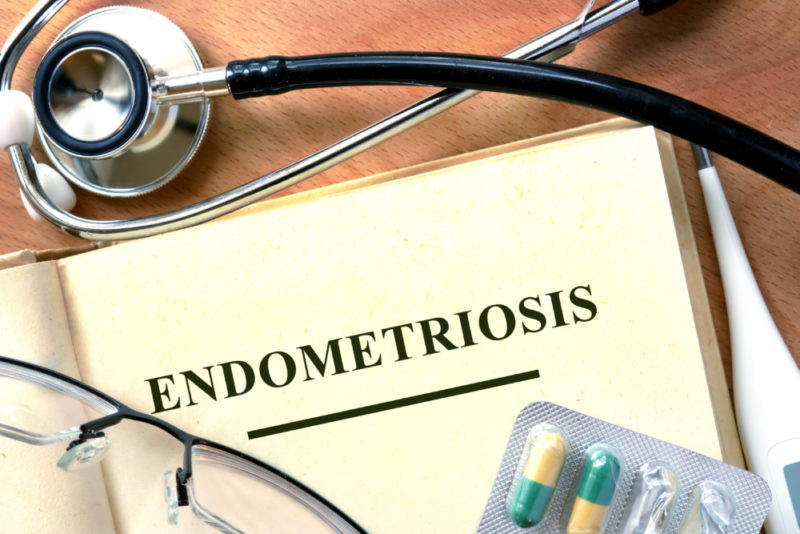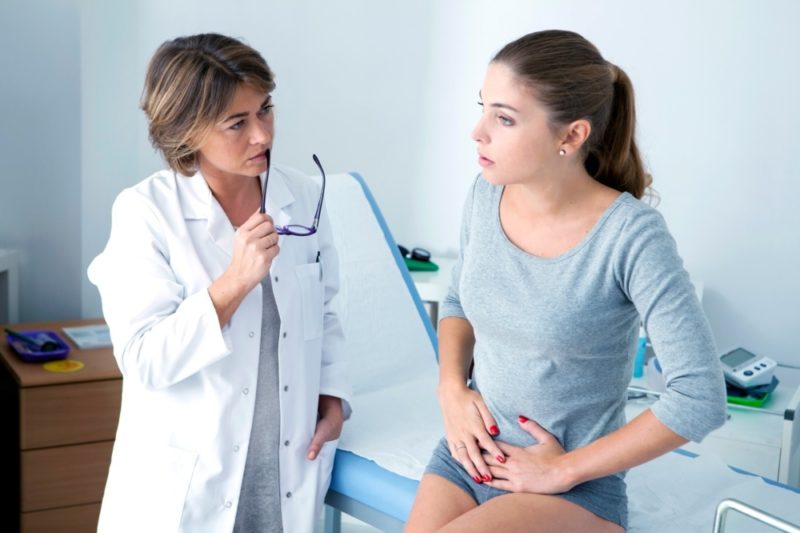Endometriosis ranks third in the ranking of causes of infertility in women. Although it is most common in women over 35, younger women of reproductive age are also affected. In addition to infertility, the disease has many other serious consequences, which is why it is better to treat endometriosis immediately after its diagnosis, using all available methods.
Material Content:
- 1 What is endometriosis?
- 2 Causes and symptoms of the disease
- 3 Forms and stages of the disease
- 4 Diagnostic measures
- 5 Endometriosis treatment
- 6 Folk remedies
- 7 Preparations for the treatment of gynecological disease
- 8 Is it possible to get pregnant with pathology
- 9 Features of treatment after 40, 50 years
- 10 Prevention
What is endometriosis?
The disease is common among women who have a general hormonal disorder. The result is a violation of the normal process of menstruation. During it, the endometrium (the internal tissues of the uterus) cannot begin to exit in the traditional way. Instead, they accumulate in the abdominal cavity, and in advanced forms often even in the lungs and larynx.
At risk are not only women after 40 years. Endometriosis can also occur in very young girls with an absent sexual life or without regular sexual contacts.
The main danger of the disease lies in the fact that fragments of the endometrium are localized on nearby organs and begin to form foreign growths that interfere with the normal functioning of the affected part of the body. The sad results are infertility and dysfunction of the pelvic organs. It is important to prevent the development of severe forms of the disease, which is greatly facilitated by timely diagnosis.
Causes and symptoms of the disease
Doctors still have not come to a final conclusion on the question: what factors cause this disease.
Among the proven causes of endometriosis are:
- hormonal failure of any nature, including a decrease in estrogen production;
- frequent mechanical influences on “female organs” (abortions, miscarriages);
- genetic predisposition;
- lack of sexual contact with people of the opposite sex;
- pathologically reduced hemoglobin concentration in the blood (anemia).
In all cases, the disease manifests itself in the same way. Typical symptoms of endometriosis:
- cutting pains in the lower abdomen (less often in the entire abdominal cavity), aggravated by the end of menstruation;
- painful spotting in between menstruation;
- discomfort during intimacy;
- if the bladder and intestines are among the lesions, pain occurs during urination and defecation.
Medicine has recorded a number of cases when endometriosis of the uterus was asymptomatic. Even experienced professionals will be able to identify it only with the help of hardware examination.
The disease is difficult to diagnose, because the symptoms are very similar to appendicitis or other similar diseases. That is why, if surgery is planned, it is necessary to conduct an ultrasound of the abdominal cavity, because it will eliminate the likelihood of error.
Forms and stages of the disease
The criterion for the classification of endometriosis is the localization of foci and the depth of tissue damage.
In accordance with the first parameter, there are:
- Genital format. With it, scattering of the endometrium occurs in the cervix and uterine canal. This type of disease is called adenomyosis or internal endometriosis. Along with them, an external genital form of the disease can occur.
- Extragenital format. It implies the growth of the endometrium outside the walls of the uterus. We are talking primarily about the intestines, kidneys, bladder. Postoperative scars, and in more rare cases respiratory organs, can become a lesion focus.
There is a gradation of the disease depending on the degree of neglect.
According to her, 4 stages are distinguished:
- Endometriosis of the 1st degree - symptomatically may not manifest in any way. Menstruation is normal, but pain may be present before it begins, the likelihood of pain during menstruation is also high. Independent conception at this stage occurs unhindered. Even a hardware examination is not able to identify the foci of the disease. Pathology can be recognized only by observing a gynecologist and conducting a two-stage ultrasound scan (1 - before menstruation, 2 - immediately after them).
- Grade 2 disease - affected cells begin to grow into the depths of the organ. The pain syndrome is amplified. Endometroid cysts form on the appendages. In parallel, a shortening of the cycle occurs, and the appearance of spotting spotting a couple of days before the onset of menstruation. Pregnancy is still possible at this stage.
- Endometriosis 3 degrees - pain intensifies, the cycle is disrupted, large blood loss during menstruation. Often the symptoms are supplemented by anemia caused by leaching of iron from the body. Adhesive diseases causing nausea and vomiting are localized in the pelvis.
- Stage 4 - an extremely neglected degree of the disease, occurs in the complete absence of treatment. In this case, patients experience intolerable pains in the abdominal cavity, which acquire a regular character. Cysts on the ovaries grow to huge sizes. The lesions capture only the appendages, but also the intestines with the bladder.
The sooner endometriosis is detected, the easier it is to cure it. In advanced forms, surgical intervention is indispensable.
Diagnostic measures
An experienced specialist, based on patient complaints, may suspect endometriosis. Confirm its presence helps inspection.
The presence of the disease will be indicated by:
- ovaries enlarged due to cystic formations;
- painful and spike-like compaction behind the uterus;
- poor mobility of the uterus and appendages (mainly due to adhesions);
- spherical shape of the main reproductive organ.
As a rule, in addition to the examination, colposcopy and ultrasound are prescribed. Moreover, the use of a transvaginal sensor is more informative than standard abdominal ultrasound, especially if there is endometriosis of the cervix. The ideal time for examination is the second half of the cycle (from 16 to 19 days).
In the event of a diagnosis, MRI, computed tomography or hysteroscopy is performed. With advanced forms of the disease, cystoscopy and irrigoscopy are advisable. With their help, the degree of damage to the bladder and intestines is determined. As auxiliary research methods, a blood test for the presence of tumor markers is used.
Endometriosis treatment
To eliminate the need for surgery and further complications, the fight against the disease must be started in the early stages. Treatment of endometriosis in women depends on the depth of tissue damage. In the early stages, you can get rid of it with the help of hormonal medications. Progressive endometriosis quickly becomes chronic. Therefore, at each relapse, you will have to consult a gynecologist. Moreover, with a high degree of probability, it will be necessary to remove the affected areas surgically with subsequent complex therapy, consisting of both drugs and the use of alternative medicine.
Folk remedies
Alternative therapy includes a whole range of measures, which include not only taking decoctions of medicinal herbs, but also mud therapy, applying leeches and much more.
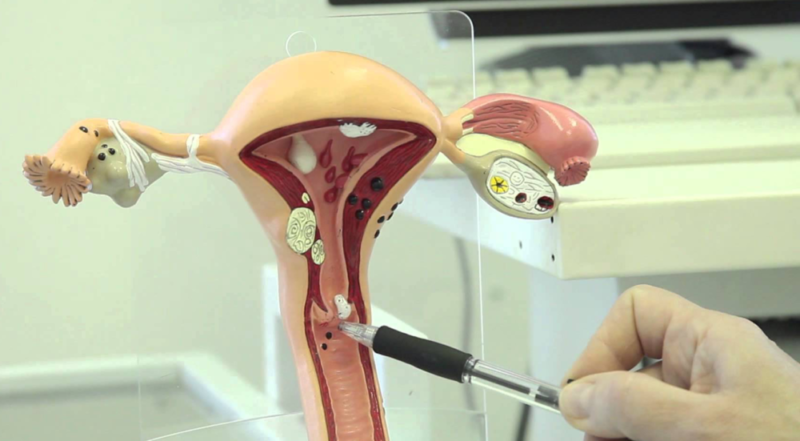
Popular folk remedies for the treatment of endometriosis based on herbs:
- calendula decoction, used as a drink or douching, as well as impregnation of tampons;
- a mixture of aloe juice, propolis and honey (laid on the affected areas at night);
- onions boiled in milk (placed in the vagina);
- hemp seed infusion (taken before meals three times a day);
- decoction or tincture of hemlock and Maryin root;
- beetroot juice;
- propolis-based compresses;
- alcohol infusion of hop cones or pine nuts;
- a mixture of decoctions of Siberian ginseng and orthilium one-sided;
- infusion of 1 tbsp. tablespoons of cherry bark, 3 tbsp. tablespoons of mulberry root and 100 g of vodka.
It should be understood that the use of folk remedies alone is not able to cure a serious illness. In addition, herbal treatment is time consuming. Doctors recommend using the healing effect of plants as an additional tool in the complex treatment of endometriosis.
Preparations for the treatment of gynecological disease
To get rid of the disease, a group of drugs is prescribed that have different directions of action. Firstly, these are painkillers (a direction to reduce symptoms). Secondly, hormonal medications are used, which play a key role in the fight against the disease. After all, it is a violation of the production of hormones that leads to the appearance of pathology.
The most effective drugs for the treatment of endometriosis:
- intrauterine hormonal spirals (Mirena);
- solutions for gestagen injection (Depo-Provera);
- tablets containing progestins (Duphaston, Utrozhestan, Norethisterone);
- oral contraceptives (Janine, Diane-35, Novinet, Silou);
- estrogen receptor modulators (Letrozole);
- antigonadotropins (Danatrol, Gestrinone);
- gonadotropin-releasing hormones (Buserelin and Sinarel sprays, Zoladex and Diferelin injections).
In the presence of advanced forms of the disease, the listed drugs should be used in combination and supplemented with surgical "cleaning" of the affected areas.
Is it possible to get pregnant with pathology
Endometriosis itself does not cause infertility, it negates the chances of becoming pregnant. The main reason for this is obstruction of the ovaries affected by cystic formations. However, when the organ's partial conduction is preserved in the early stages, the probability of becoming pregnant is very high.
Most gynecologists agree that the conception of a child with this pathology can lead to an automatic cure of the disease. This happens due to hormonal changes that occur in the body of a pregnant woman. However, it should be understood that in the presence of the disease, strict medical supervision is necessary throughout the entire period of gestation, because there is a high probability of miscarriage.
Features of treatment after 40, 50 years
Patients of the older age group are more likely to tolerate this disease. In addition, therapy for them has its own characteristics, since most women at this age no longer plan to have children. Therefore, the basis of treatment here is hormonal drugs, artificially introducing into the state of menopause.
In this case, medications are prescribed that inhibit the production of sex hormones in the ovaries. Thus, due to the lack of estrogen, the development of endometriosis stops, and the affected cells stop growing.
If therapy is successful, a woman needs a long recovery period. Its duration can be more than a year, until the hormonal balance comes into equilibrium.
It should be noted that the older the woman, the weaker the disease responds to medication. Therefore, in severely advanced cases, only surgical paths will help in the fight against endometriosis.
Prevention
The key to successful disposal of the disease is its timely detection. In the case of endometriosis, this is extremely problematic due to the lack of obvious symptoms.
Therefore, the most effective preventive measures include:
- constant monitoring of women who have had an abortion or uterine surgery;
- examinations of girls in adolescence;
- a thorough examination of women with dysmenorrhea;
- use of oral hormonal contraception;
- control of the absence of PPIs (if available, timely therapy aimed at complete cure).
In the event of pain symptoms, you should not try to do with painkillers alone, because with each subsequent menstruation, endometriosis will only progress.
No specialist is able to help a woman who is predisposed to this disease if she herself does not monitor her health. One should not be limited to visiting a doctor here, because the cause of endometriosis is hormonal disorders. Therefore, do not forget about a healthy lifestyle, which is not possible without giving up bad habits.


